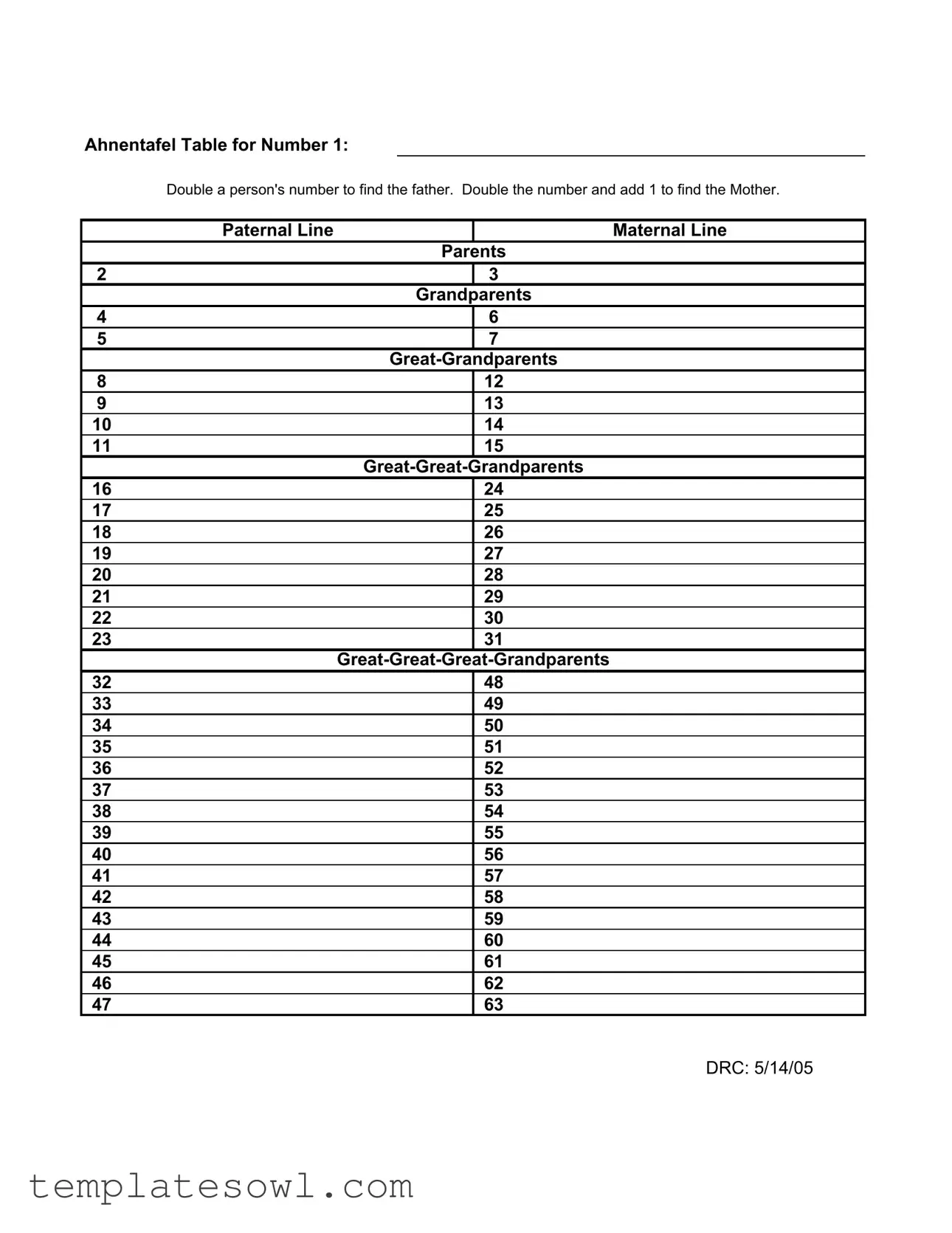What is an Ahnentafel form?
An Ahnentafel form is a specific genealogical chart that displays an individual's direct ancestry. It organizes a person's ancestors in a structured way, showing each generation in a distinct format. The number assigned to each person helps identify their position in the family tree.
How do I read the numbers on the Ahnentafel chart?
The numbering system is straightforward: the individual at the top of the chart is number 1. To find a person's father, double their number. To find their mother, double the number and add 1. For example, number 2 represents the father, and number 3 represents the mother of the person at number 1.
What is the purpose of an Ahnentafel?
The primary purpose of an Ahnentafel is to organize and display a person's lineage in a clear and concise manner. It simplifies the process of tracking ancestry, making it easier to understand family connections across multiple generations.
Can I trace my lineage back as many generations as I want?
Yes, you can continue to trace your lineage back using the Ahnentafel form indefinitely. Each generation adds to the complexity, but the doubling method for determining numbers remains constant. This allows for a systematic approach to family history research.
What information should I include aside from names?
While names are essential, it's beneficial to include birth dates, death dates, marriage dates, and places associated with each ancestor. This added detail can provide context and help confirm relationships within your family tree.
Is the Ahnentafel form suitable for large families?
The Ahnentafel form works well for large families, though the chart will become extensive with many generations. The structured format helps keep information organized, making it easier to understand and navigate family ties, regardless of family size.
Can I create an Ahnentafel chart digitally?
Yes, many genealogy software programs and online resources allow users to create Ahnentafel charts digitally. These tools often include features for adding specific details, helping to simplify the process of maintaining and sharing your family history.
How often should I update my Ahnentafel form?
It's a good practice to update your Ahnentafel form whenever you discover new information about your ancestors. This can include adding new family members, correcting errors, or filling in gaps as you continue your research.
Is there a limit to how many generations I can include in the Ahnentafel?
There is no inherent limit to the number of generations you can include. However, as you compile more ancestors, the chart will grow larger, potentially making it harder to read. It's often useful to focus on immediate and extended family first before branching out further.
What is a common mistake when using the Ahnentafel form?
A common mistake is misnumbering ancestors, which can lead to confusion in your family tree. Ensure accuracy when recording numbers and double-check relationships as you compile your information to maintain clarity.


